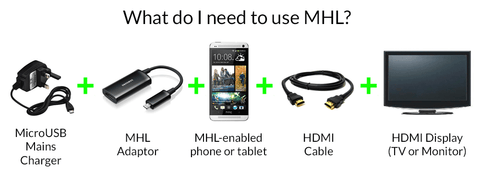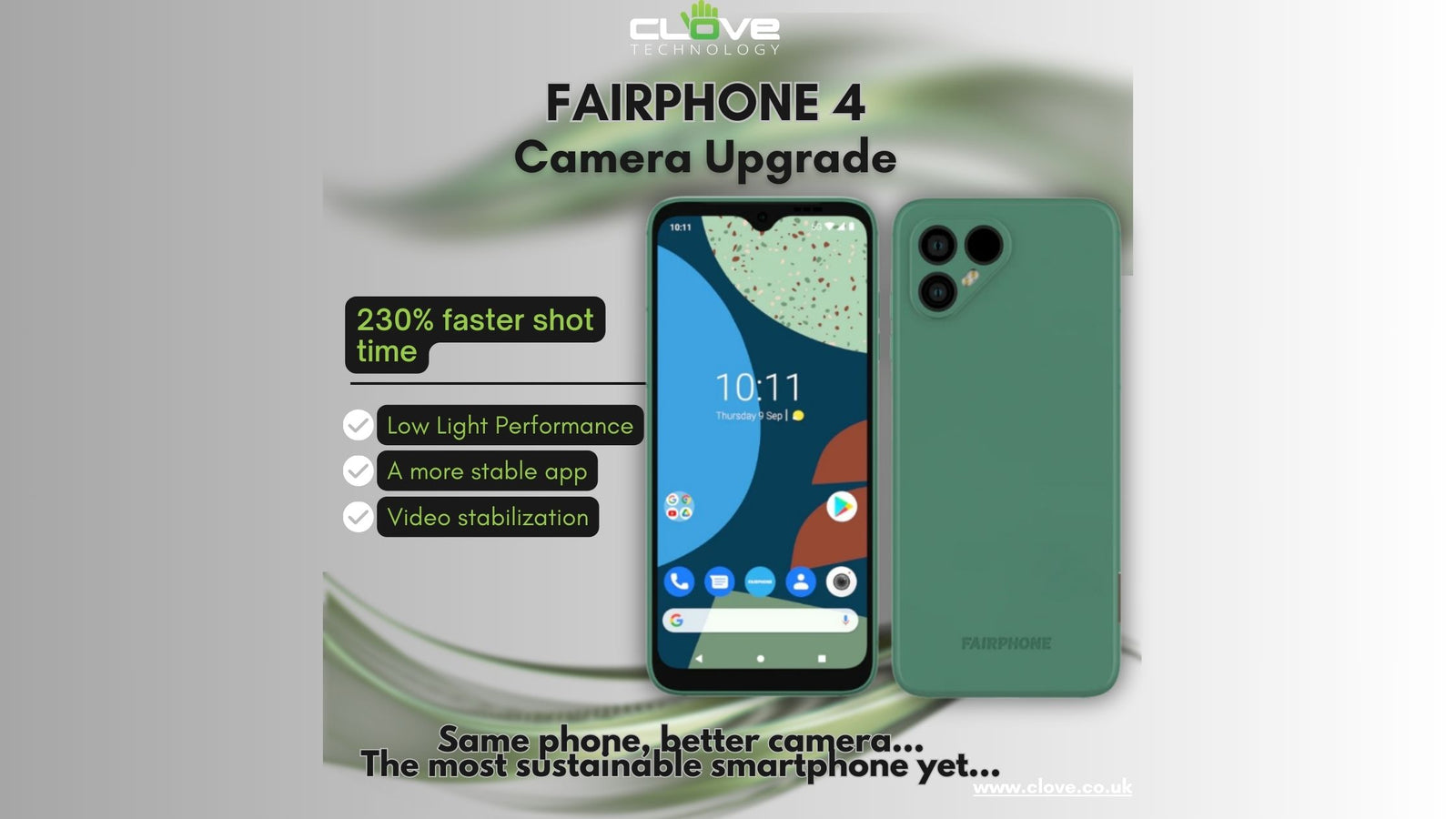Connect your smartphone or tablet to a larger display
MHL (Mobile High-Definition link) is a technology that has now been included with smartphones and tablets for the last few years. It’s still one of the easiest ways to transfer what’s on the screen of your phone to a larger display, such as a TV. There will soon be a new and improved version of MHL called SuperMHL, but for the time being it is MHL that is used by the likes of Samsung and Sony.
If you’re reading this post, it’s possible that you are considering, or have just bought for the first time, a device that has MHL included on its spec sheet. If that’s the case, you’re in for a treat – MHL is a great feature to have. In this post we’ll explain exactly what it is and detail some of the cool ways in which you can use it.
What is MHL?
MHL is a technology standard that has been developed by a variety of smartphone manufacturers, including Nokia, Sony, Samsung and more. It enables you to mirror the display from your smartphone or tablet on a larger display.
Where can I buy an MHL adaptor?
We offer a range of MHL adaptors for different handsets. We ship internationally and will be happy to help you with any questions that you have about choosing the right adaptor. We have created this ‘Which MHL cable should I buy?‘ post, showing which adaptors are needed for the most recent handsets. We’ve also created ‘Which MHL Adaptor does my Samsung Galaxy Need?’, which is specific to Samsung handsets.
You can view the MHL adaptors that we have available in our online store here.
What can I use MHL for?
OK, before we get into the technical side of things, we’ll have a look at some of the cool stuff that MHL can do. We’ve now created a fair few demo videos of various handsets being connected using MHL and a couple of them are even featured on the MHL consortium website.
Here’s a list of some of the activities that you could use MHL for once connected to a large display:
- Gaming. Either use your device’s touchscreen to control the game, or connect a controller via Bluetooth and use that.
- Movies. Playback movies or home-made videos that are stored on your handset. Or stream content from services such as Netflix.
- Photo slideshow. Show friends and family photos that you have taken using your handset.
- Use you smartphone as a computer. Once you’ve connected to a larger display, connect a Bluetooth mouse and keyboard and use your smartphone as you would a computer.
- Music. If you want to play some music out loud but don’t have access to a stereo system, you could connect your handset to a TV and play the music through its speakers, which will be a lot louder than those on your smartphone.
- Presentation. Show colleagues the Office documents that you’ve been working on.
Below you can view some of our MHL demo videos. To see more videos and different handsets being used, click here to go to our YouTube channel.
This first one shows the Samsung Galaxy S3 being used as a computer thanks to MHL and Bluetooth.
The second video, which is slightly older but still applicable in the capabilities that it demonstrates, which was created for us by Murray Winiata from AndroidNZ. It gives a demonstration of MHL being used for gaming on a larger display.
What do I need for MHL to work?
Using the microUSB port (the same one that is used for charging) on your device, an MHL adaptor and a HDMI lead, the screen from your phone or tablet can be mirrored on a larger display, such as a TV. This means that exactly the same picture from your phone is enlarged on a bigger screen.
In order to use MHL, you will need the following:
- The MHL-enabled phone or tablet that you wish to connect to a larger display
- The microUSB mains charger that came with your handset
- The correct MHL adaptor for your handset
- A HDMI lead
- The HDMI display that you wish to connect your smartphone to
Typically, the only additional item that you will need to purchase from the above list (once you have already purchased your phone) is an MHL adaptor. It is important that you choose the correct MHL adaptor for your handset, which is why we have put together this ‘Which MHL cable should I buy?‘ post.
To power the MHL adaptor, you need a microUSB charger, but the one that came with your handset (provided that it is microUSB 2.0, which the vast majority are) is fine for this.
Most households already have a HDMI lead as well – they are used to connect games consoles and DVD players to the TV.
The image below shows the items you need in order to make use of your MHL-enabled device. Click the image to view it full size.

Exceptions
There are, of course, some exceptions. Here’s where they apply to the items described above:
MicroUSB mains charger.
Some newer handsets use MHL 2.0, which does not require the connection to be powered. These currently include the Samsung Galaxy S4 and Samsung Galaxy Note 3. This post lists the different adaptors required for different handsets and includes the demo videos that we have created for them.
It’s also worth noting that some handsets, such as the Samsung Galaxy Note 3, have begun shipping with microUSB 3.0, which uses a larger connection than microUSB 2.0. MHL adaptors have a port for microUSB 2.0, so the mains charger that comes with the Note 3 (or any other microUSB 3.0 charger), will not be compatible with the adaptor. However, the MHL 2.0 adaptor can still be used with the Note 3 using a microUSB 2.0 cable.
MHL Adaptor
Some televisions and displays are now MHL-enabled. This means that you do not need an MHL adaptor to use them with your handset – you can connect the handset directly to the display using a microUSB to HDMI cable. In most cases this should be supplied with the display. You can see our demo video of a smartphone being used with an MHL display in this post.
HDMI Cable
As described above, if you are using an MHL-enabled display, you will not need a HDMI cable, but you will need the correct cable to connect
Does my phone or tablet have MHL?
Many top to mid range smartphone now come with MHL capability. The best way to find out if your device has MHL is to look on its spec sheet. Typically it will be listed under connectivity or ‘video out’. For the products that we list on the Clove website, we list it under Ports > Video Out.

This list shows the majority of handsets and tablets that are MHL-enabled.
Can I add MHL to my device if it is not included already?
No. If your device is not MHL-enabled when you purchase it you will not be able to add it using an accessory.
Does my television/display need to be MHL enabled for it to work?
No. The majority of current televisions and displays in usage are not MHL-enabled, which is why an MHL adaptor is required. There are some newer televisions and monitors that are MHL-enabled, which we talked about earlier in this post.
Does MHL work on any TV?
No MHL does not work on any TV. The TV needs to be HDMI-enabled, but the vast majority that are in use are now HDMI-enabled. If you’ve bought a new TV in the last 10 years it should be compatible.
Are there different versions of MHL?
Yes, there are different versions of MHL. At the time of writing this post, the majority of handsets use MHL 1.0. However, there are some newer handsets, such as the Samsung Galaxy Note 3 and Samsung Galaxy S4, which use MHL 2.0. The specification for MHL 3.0 has also been announced, although it will be a while until it is used in devices.
All this may sound a bit confusing, but we explain the differences in more detail in this post, which also assists you in choosing the correct MHL cable for your device.
Updates as of late 2014 –
- MHL 3.0 has been announced allowing support for 4K resolution. This is implemented in a few high end phones including the Sony Xperia Z3, Samsung Galaxy S5 and Galaxy Note 4.
- USB 3.1 ports (9.6 Gb/s) will start to replace USB 3.0 (4.8 Gb/s) in high end electronics and televisions. MHL 3.0 will support this bitrate in so long as mobile manufacturers use the micro USB Type C connector in their new phones.
Does MHL need power?
As mentioned above, an MHL 2.0 adaptor does not need power. However, you may still wish to connect a charger in order to keep the handset charged.
If you are using an MHL 1.0 adaptor, it will need a power input in order to work.
Does MHL charge a phone?
Connecting your phone via MHL will not result in it being fully charged, but it will stop the battery from draining. This means that your handset should have roughly the same amount of power as when it was first connected to the display. If you are carrying out very power-hungry tasks, such as streaming HD movies, there may be a slight depletion of the battery.
Is SlimPort the same as MHL?
No. SlimPort and MHL are similar in the results that they achieve, i.e mirroring your device display to a larger screen, but on the technical side of things they are different.
Currently the majority of devices use MHL for video out instead of SlimPort. The latter is included in the LG Nexus 4, Nexus 5 and LG G2 though, so we can expect it to become a bit more commonplace in the near future. We go into more detail about this in our ‘What is SlimPort?‘ post.
What other technologies are there that are similar to MHL?
Other than SlimPort, there are some other technologies that are similar to MHL in that they can also mirror your device’s screen to a larger display:
Miracast
Miracast is like a wireless version of MHL and is being included with an increasing number of handsets. A setup without wires does of course sound more appealing, but isn’t as cheap to set up. Most of the time, all you need to get going with MHL is the MHL adaptor. The same is true of a Miracast adaptor, but they are more expensive.
You can read more about Miracast and its workings in this post and view content that we have created for Miracast here.
DLNA
DLNA is similar to Miracast in the way that it works and also streams content wirelessly from one screen to another. It’s included with a reasonable number of handsets – Samsung in particular uses it a fair bit – but it isn’t as open as Miracast as manufacturers that implement it tend to use it as proprietary software.
MicroHDMI
Until recently some devices used microHDMI for video out. With microHDMI, the handset could be connected to a display using a microHDMI to HDMI cable. However, this involved including an extra port on the device, as a microUSB port would still be required for charging. With manufacturers trying to improve aesthetics and reduce handset thickness as much as possible, having one less port makes design a bit easier.
Questions
We’ve tried to cover MHL as thoroughly as possible in this post, but if you’ve still got any questions, feel free to ask in the comments.





